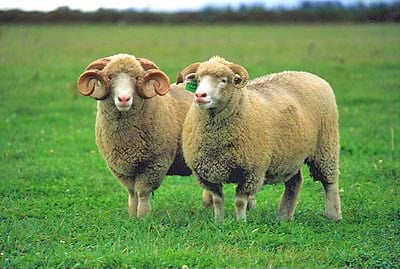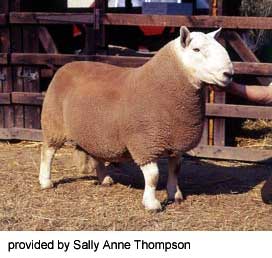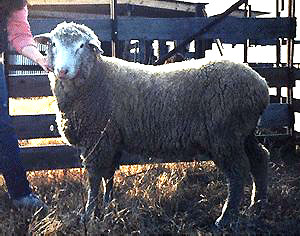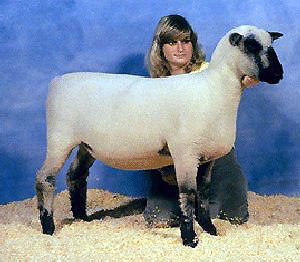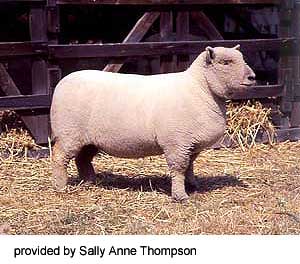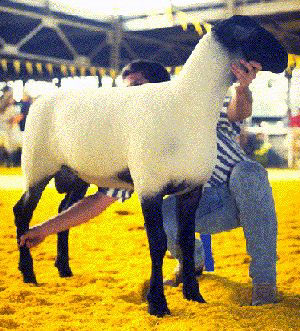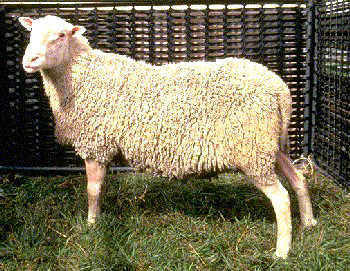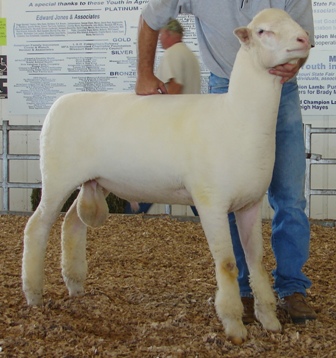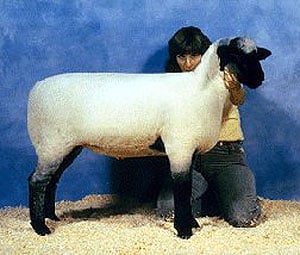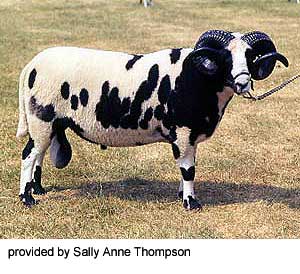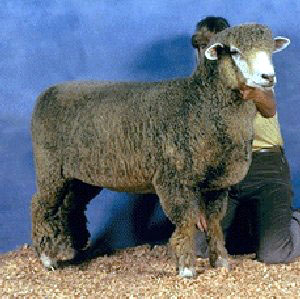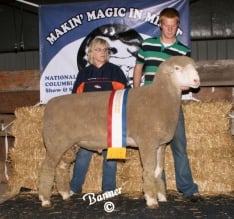The Ultimate Sheep Breed Identification Quiz
Attempt this the ultimate sheep breed identification (with pictures) quiz and test your knowledge regarding the same. In this sheep breed quiz, you've to figure out the breed by looking out the pictures provided in the question. There are many breeds of sheep, and Merino is the most common one found in the western state of the U. S. Let's See moresee how well you score on this test. Play the quiz now! Good luck!
(135).jpg)
- 2.
-
Cheviot
-
Dorset
-
Suffolk
-
Hampshire
-
Shropshire
Correct Answer
A. CheviotExplanation
Cheviot sheep are intelligent, self-reliant, resourceful, and among the healthiest and most long-lived breeds. The North Country is an tough sheep that produces both a superior lamb crop and a fleece that delights handspinners. It has outstanding crossbreeding ability and can be used as either the sire or the dam breed. The Cheviot is a distinctive white-faced sheep, with a wool-free face and legs, pricked ears, black muzzle and black feet. It is a very alert, active sheep, with a stylish, lively carriage.Rate this question:
-
- 3.
-
Polypay
-
Suffolk
-
Hampshire
-
Shropshire
-
Tunis
Correct Answer
A. PolypayExplanation
Polypay Sheep were bred to strive for:
High lifetime prolificacy
Large lamb crop at one year of age
Ability to lamb more frequently than once per year
Rapid growth rate of lambs
Desirable carcass quality
The gene pool was developed from four existing breeds: Finnsheep with their high prolificacy, early puberty and short gestation; Rambouillet with their adaptability, hardiness, productivity and quality fleeces; Targhee with their large body size, long breeding season and quality fleeces and Dorset with their superior mothering ability, carcass quality, early puberty and long breeding season.Rate this question:
-
- 4.
-
Dorset
-
Suffolk
-
Shropshire
-
Hampshire
-
Polypay
Correct Answer
A. ShropshireExplanation
Shropshires are a good, middle-of-the-road sheep, medium to large in size, with dark faces and wool on the legs. Shropshires are boasted to have "wool from the tip of the nose to the tip of the toes."Rate this question:
-
- 5.
-
Polypay
-
Dorset
-
Suffolk
-
Hampshire
-
Southdown
Correct Answer
A. SouthdownExplanation
The Southdown is best suited for farm flock production. It is a medium to small sized breed with a gray to mouse-brown face and lower legs and is polled (hornless). Southdown are an early maturing breed with good lambing ability and average milk production. They excel in a cross breeding program in their ability to produce meaty lamb carcasses at light weights and hot-house lambs.Rate this question:
-
- 6.
-
Suffolk
-
Hampshire
-
Dorset
-
Polypay
-
Finn
Correct Answer
A. SuffolkExplanation
The Suffolk is a polled breed, with a distinctive all-black head and legs, and single colour close cropped white wool. Suffolk's have the fastest growth rate of the terminal sire breeds.Rate this question:
-
- 7.
-
Finnsheep
-
Dorset
-
Suffolk
-
Hampshire
-
Polypay
Correct Answer
A. FinnsheepExplanation
Finn ewes are hardy, will lamb on an accelerated lambing program, have strong maternal instincts, and are highly prolific. Lambs are noted for their high livability.
Finns are typically fine boned.Rate this question:
-
- 8.
-
Polypay
-
Hampshire
-
Suffolk
-
Dorset
-
Finn
Correct Answer
A. DorsetExplanation
Both horned and polled Dorsets are an all white sheep of medium size having good body length and muscle conformation to produce a desirable carcass. The fleece is very white, strong, close and free from dark fiber.Rate this question:
-
- 9.
-
Suffolk
-
Dorset
-
Shropshire
-
Hampshire
-
Finn
Correct Answer
A. HampshireExplanation
The Hampshire is a large, open faced and active sheep with a mild disposition. Mature rams should weigh 275 pounds or more and mature ewes should weigh 200 pounds or more in breeding condition. The ears should be moderate in length, thick, covered with a coarse dark brown or black hair and free from wool. The face should be of good length, dark in color and practically free of wool from the eyes down. An unbroken woolcap should extend from the neck over the forehead. Any wool interfering with vision should be considered serious. Legs below the knee and hock should be relatively free of wool. The Hampshire should show quality without weakness and size without coarseness.Rate this question:
-
- 10.
-
Cotswold
-
Hampshire
-
Southdown
-
Finn
-
Jacob
Correct Answer
A. JacobExplanation
Slight of build, with the narrow, lean carcass typical of some of the ancient British breeds, they are immediately noticeable due to their black and white fleeces and prominent horns. Both males and females are horned, sporting two, four and occasionally six horns.Rate this question:
-
- 11.
-
Dorset
-
Columbia
-
Corriedale
-
Hampshire
-
Suffolk
Correct Answer
A. CorriedaleExplanation
The Corriedale is a dual-purpose sheep. It is large-framed, polled with good carcass quality. Although its role has traditionally been to produce premium lambs when mated to sires of meat breeds, the Corriedale is now achieving comparative performance rates with purebred lambs. This bonus together with a high skin value secures its future as a popular breed.Rate this question:
-
- 12.
-
Coumbia
-
Dorset
-
Suffolk
-
Finn
-
Shropshire
Correct Answer
A. CoumbiaExplanation
Columbia sheep were developed by the United States Department of Agriculture as a true breeding type to replace cross breeding on the range. Columbias are exceptionally large and very rugged. The mature Columbia rams weigh between 225 and 300 pounds and the females weigh 150 to 225 pounds.Rate this question:
-
- 13.
-
Cotswold
-
Dorset
-
Shropshire
-
Hampshire
-
Finn
Correct Answer
A. CotswoldExplanation
The Cotswold has a white face and white legs, grayish-white color is not considered objectionable, and small black spots on the face or legs are not entirely unknown. They will also exhibit dark pigmentation on the skin of the nose, inside the ears and on the hooves. The Cotswold has demonstrated its greatest usefulness in crossing on flocks of ewes that lack in size, fleshing qualities, and in length of fleece.Rate this question:
-
Quiz Review Timeline (Updated): Mar 21, 2023 +
Our quizzes are rigorously reviewed, monitored and continuously updated by our expert board to maintain accuracy, relevance, and timeliness.
-
Current Version
-
Mar 21, 2023Quiz Edited by
ProProfs Editorial Team -
Aug 31, 2010Quiz Created by
Fauquier Judging
 Back to top
Back to top



